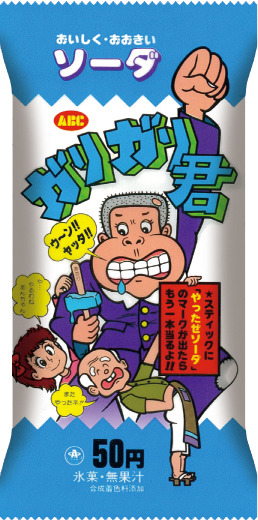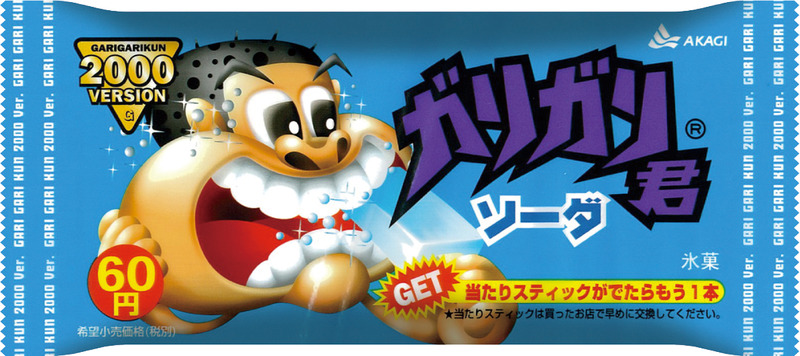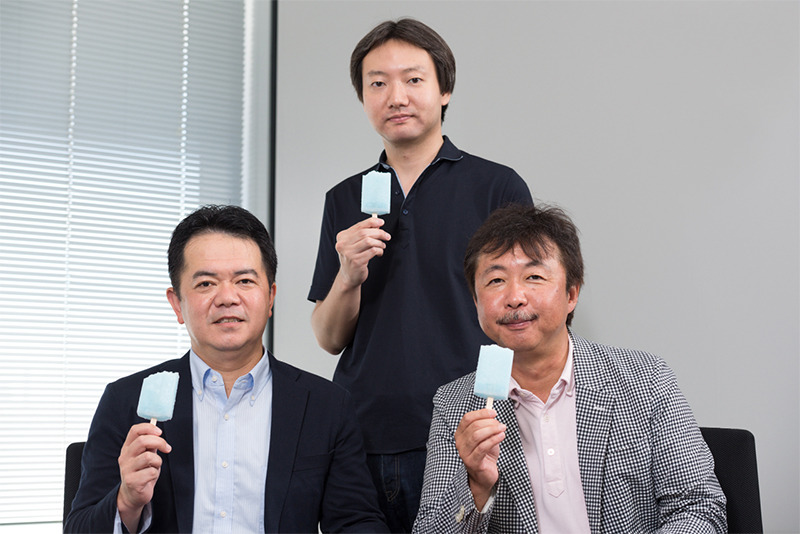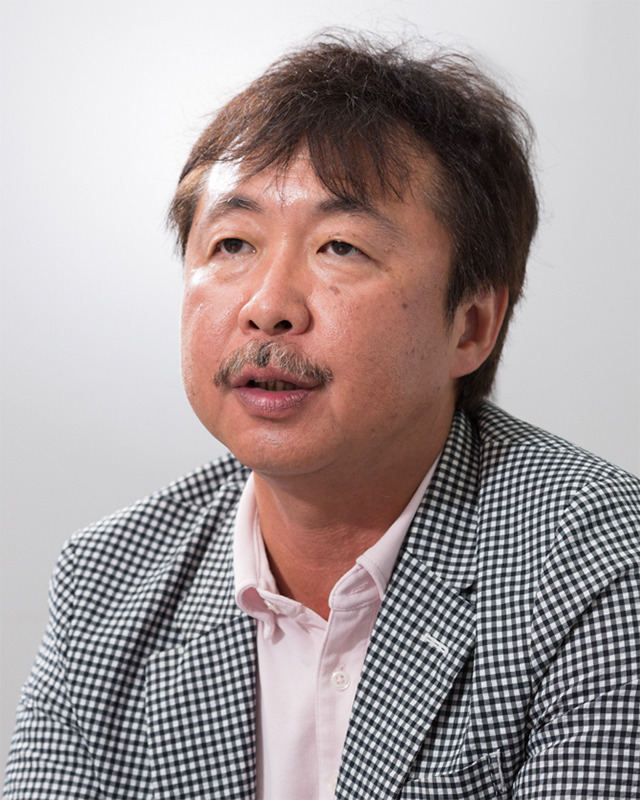Gari-Gari-Kun, beloved as the character for Akagi Dairy's flagship product "Gari-Gari-Kun," has been around for over 30 years since its 1981 debut. Today, it's the face of a popular ice cream known to everyone from children to adults. This time, we invited Fumiaki Hagiwara, the key figure overseeing Gari-Gari-Kun's communications at the company, and Kazuo Rikukawa from Character Data Bank to trace the path to Gari-Gari-Kun's success.
Yamamoto: Personally, I've been familiar with Gari-Gari-Kun since childhood, and even now, I still have a strong image of the old Gari-Gari-Kun. I understand that Gari-Gari-Kun underwent a major design renewal in 2000. Before that, rather than being a character, Gari-Gari-Kun was perceived more like a mark attached to the product packaging. It feels like this renewal was the turning point where Gari-Gari-Kun truly came alive as a character, leaping off the packaging and becoming active. Did the perception of Gari-Gari-Kun change significantly around 2000?

Hagiwara: That's right. In 1999, we conducted a large-scale product survey of consumers nationwide. The responses about the character included things like "his gums are creepy," "his sweat smells like mud," and even "I would absolutely never buy it" (laughs). That's what led to the discussion about a redesign. Thinking about it, since its launch, the character had been used with no major design changes, so it's perhaps natural that people started feeling a disconnect with the design aesthetic.
Yamamoto: Still, since it launched in 1981, changing something that had been ingrained in people's memories for so long—something that had already become an icon in a way—must have taken courage, right?
Hagiwara: But fundamentally, Gari Gari-kun's core assets were clear. So the redesign aimed to elevate the elements that define its identity—even those slightly off-putting aspects pointed out in the survey—while preserving them to some degree.

1981 Release

2000 release
Hagiwara: But actually, the fundamental shift in how people perceived Gari Gari-kun happened later, in 2004. It was a particularly hot summer, and overall ice cream sales were booming. It was also my first year after transferring to the marketing department. In a certain magazine's character ranking, Gari Gari-kun came in 4th place for the most disliked character. And it wasn't even in the "liked" category; it was solely listed among the disliked characters... Given that we had gone to the trouble of relaunching it in 2000 because it was so disliked, running TV commercials, creating a song, and seeing sales increase... I was simply shocked to learn it was still disliked to such an extent.
Yamamoto: So, while brand awareness was improving, there was still an issue with favorability.
Hagiwara: Exactly. But when we looked into it, many people actually liked the ice cream itself. That gave us hope that there was still work to be done. So, we decided to expand the character's reach and venture into character business. The following year, 2005, I personally consulted with Mr. Rikukawa and visited major character licensors multiple times, desperately learning business models.
The Birth of "Gari Gari-kun Productions"
Rikukawa: After that, you established "Gari Gari-kun Production" (hereafter GariPro), a promotion company dedicated solely to Gari Gari-kun. I believe the current expansion of Gari Gari-kun is easier precisely because it was spun off into a separate company back then.
Yamamoto: I think it's extremely rare for a company to create a dedicated promotion company solely for its corporate character. Wasn't there any debate within headquarters about creating an entirely new company just for the corporate character?
Hagiwara: No. There's a corporate culture here that encourages trying things out first. When we briefly mentioned the "GariPro" concept internally, the response was simply, "Go ahead and do it." It went smoothly. We established the subsidiary in 2006, shifting our focus from merely a product packaging mark to consciously developing Gari Gari-kun as a character. In terms of results for our core business, sales jumped from 150 million units in 2004 to 475 million units by 2013...
Rikukawa: Roughly tripling in ten years is quite an impressive figure. This shows how strategic use of a corporate character directly drives product sales. It truly exemplifies the "Gari-Pro effect," doesn't it?
The "GariPro" System for Maximizing Corporate Characters
Yamamoto: Could you tell us a bit more about Garipro's role and day-to-day operations?
Hagiwara: It was established as a joint venture with a design company. Garipro handles everything related to Gari Gari-kun: design, advertising and promotion, event management, music, design supervision for collaborations, and royalty matters. To ensure seamless integration with the product, Garipro is always included within the headquarters' Gari Gari-kun Project Team (a cross-departmental team spanning development, production, marketing, purchasing, etc.).
Rikukawa: When a typical company uses its corporate character for character business beyond advertising and sales promotions, I feel it's very challenging to handle tasks like design supervision and royalty processing while coordinating with licensees. The approach is also limited by which department handles it—whether it's advertising, public relations, or legal. Garipro oversees all of this, which I think is an ideal structure.
Yamamoto: It's a rare example among corporate character utilization cases. When nurturing a corporate character from a medium-to-long-term perspective, having a foundation where the brand is firmly protected as an organization, unaffected by personnel changes like staff transfers, feels like the strongest foundation of all.
Regarding licensing, Garigari-kun has expanded widely beyond picture books, manga series, and game software tie-ins to include collaborations with other industries and business types that make you think, "What?!". Next time, I'd love to hear more about your thoughts on these expansions.
*Continued in Part 2.

















